Earthquake Early Warning - Blog
2024-10-17: ShakeOut / GrandeSecousse earthquake drill held in Canada
On Thursday, 17th October, over 825,000 people in Canada signed up to practise the Drop, Cover, Hold on response for earthquakes. They are therefore more likely to protect themselves when they receive an Earthquake Early Warning (EEW) or feel shaking.

In British Columbia, the ShakeOutBC earthquake drill was hosted by the Vancouver Fraser Port Authority (VFPA) and conducted in VFPA’s operations centre, by staff and visitors. Additionally, the adjacent Vancouver Convention Centre plaza held a public Emergency Preparedness Fair; NRCan’s Alison Bird, Tiegan Hobbs, and Riddhi Dave, along with visiting scientist Fiona Darbyshire, hosted a booth to showcase the new national Earthquake Early Warning System and earthquake research. Also on site was the popular Quake Cottage earthquake simulator, providing people with the opportunity to experience shaking from a strong (magnitude 8) earthquake, safely.
The associated media event began with a welcome by BC Earthquake Alliance President, Naomi Yamamoto, a welcome song by Alec Dan, from the Musqueam Nation, and speeches by dignitaries. Greg Moy, Insurance Bureau of Canada, spoke about the need for people and businesses to prepare for the earthquakes which would inevitably affect the province. Duncan Webb, VFPA, described the volume and diversity of goods and traffic through the port, and VFPA’s efforts to facilitate and prioritize emergency response in the region. And, Vancouver Mayor Ken Sim, outlined the earthquake mitigation measures being undertaken by the city and encouraged people to be prepared. Finally, Alison Bird answered questions about the region’s earthquakes and EEW.
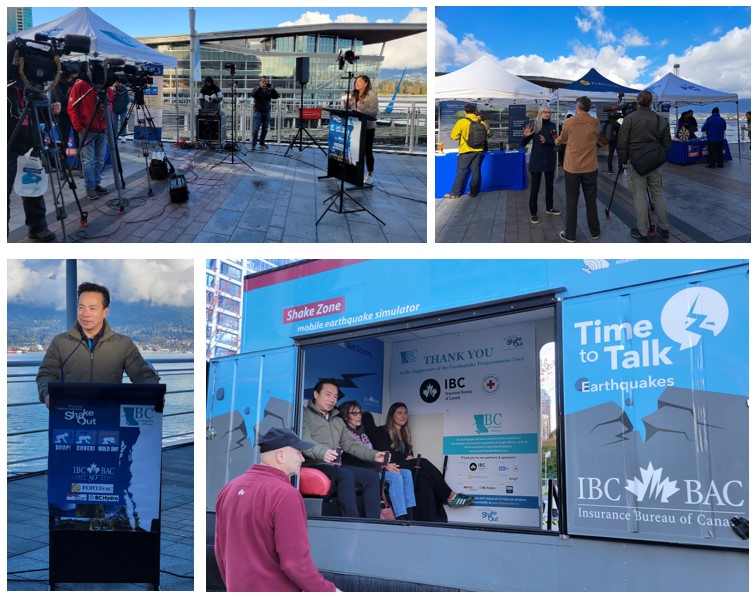
Numerous Shakeout drills were held in schools throughout Quebec, and informational segments were given by NRCan’s Chris Boucher, on radio and television stations (in Ontario and Quebec) throughout the day.
The preceding weeks showcased a brand new GrandeSecousse website, hosted by the Association des gestionnaires en sécurité incendie et civile du Québec (AGSICQ; in French only). Boucher and paleoseismologist Aube Gourdeau also delivered presentations on the importance of the GrandeSecousse/ShakeOut earthquake drill, and the upcoming EEW system soon to be launched in Quebec and eastern Ontario. They spoke to public safety coordinators, emergency planners and other people working in emergency preparedness at a seismic risk training session in Beaupré, as well as at the annual “Colloque sur la sécurité civile” held in Québec City.
In the Yukon, the Yukon Government promoted personal protection on their various social media channels, and their Health and Social Services department conducted internal refresher awareness on earthquakes.
2024-10-07: International Geodiversity Day
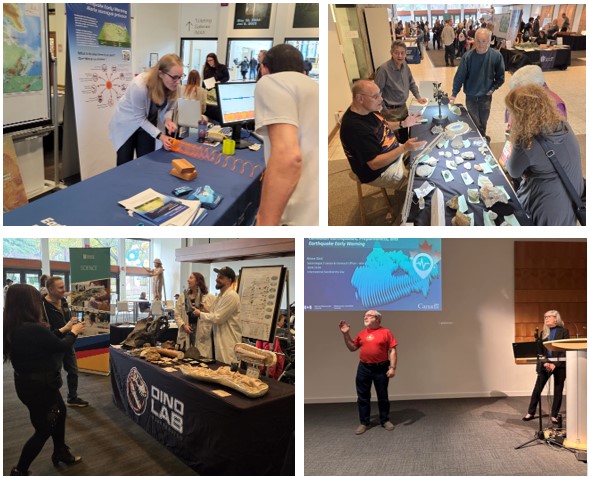
Saturday, 5th was International Geodiversity Day (IGD), promoting learning about everything that makes and shapes the Earth. Several NRCan scientists joined geophysical associates from other organisations, such as the British Columbia Geological Survey, the University of Victoria, and Dino Lab, to share their science with the public at an IGD event hosted by the Royal BC Museum in Victoria. NRCan's booths provided information and discussion on sedimentology, geology (with rock identification), tectonics, and earthquakes.
This was an ideal opportunity for NRCan's Alison Bird to speak with people about the newly launched Earthquake Early Warning system. Alison also delivered a presentation on the region's earthquakes and the EEW system, including how people will be alerted and how they should respond.
2024-09-16: EEW system sends its first alert!
On September 15th, the national Earthquake Early Warning (EEW) system sent its first alert to the public, when a magnitude 6.5 earthquake occurred just south of Haida Gwaii. The EEW system determined that strong shaking would occur in the southern region of Haida Gwaii's Moresby Island, so sent an EEW message to the National Public Alerting System (NPAS).
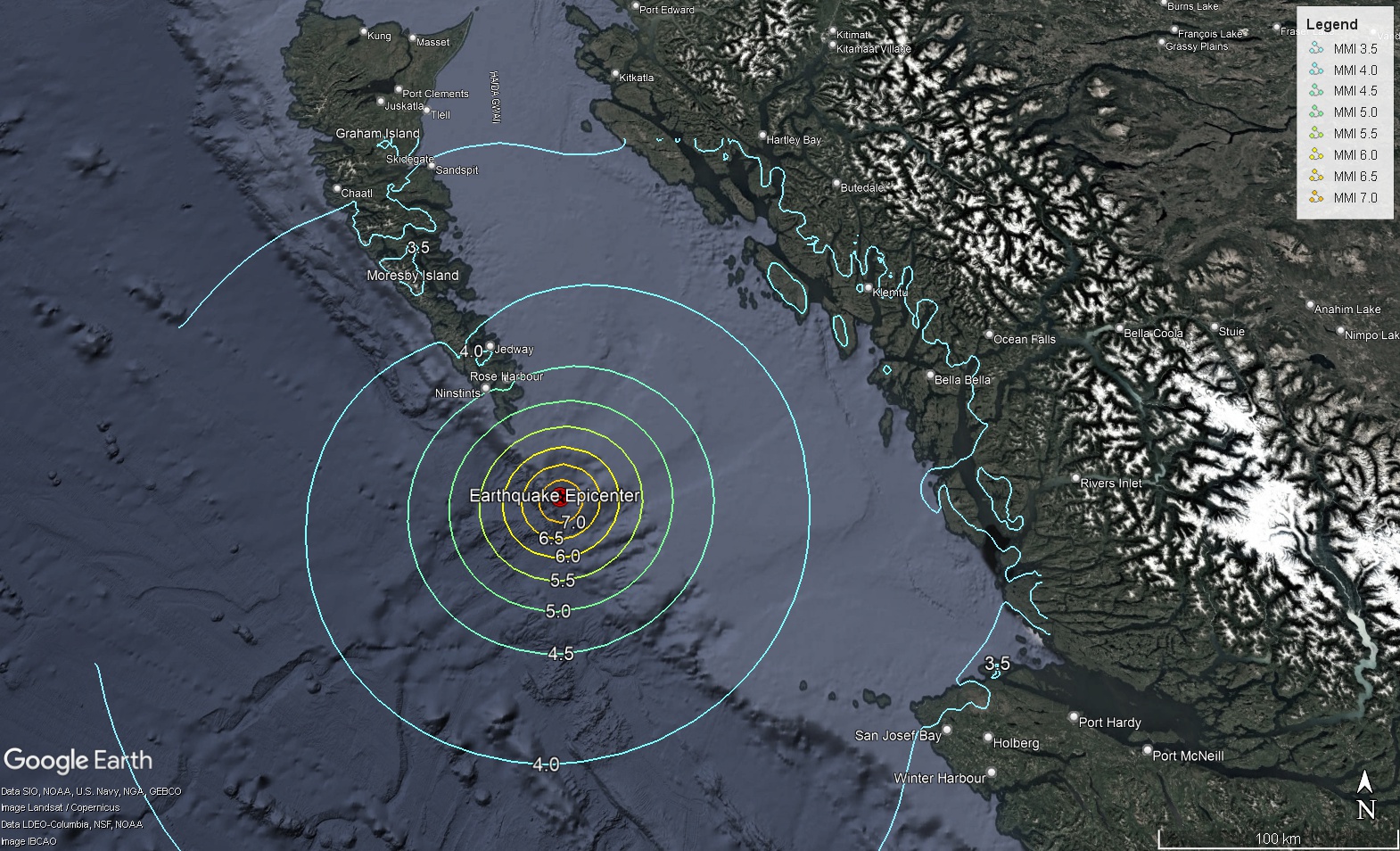
NPAS distributed radio and television alerts throughout the area's census division, which includes the town of Sandspit; people in Sandspit told NRCan's Field Researcher, Lisa Nykolaishen, they had received the alert a few seconds before they felt shaking. NPAS is also configured to alert via cell phone towers within the area of strong shaking; in this case, however, there were no cell towers in that remote (and generally unpopulated) area of the island.
2024-08-29: Launch of EEW in BC!
Today the national Earthquake Early Warning (EEW) system was launched in British Columbia. Almost 100 core EEW stations are working together to monitor and alert for powerful earthquakes in the province, providing seconds to tens-of-seconds of warning before the arrival of strong shaking. People will be alerted through the National Public Alerting System, via smart-’sphone, radio, and television; this is fully automatic and requires no registration nor app. Critical infrastructure operators and other Technical Partners of the EEW system will soon be able to trigger automated technologies at their facilities, for example, to open doors, close valves, stop trains, and sound alarms.
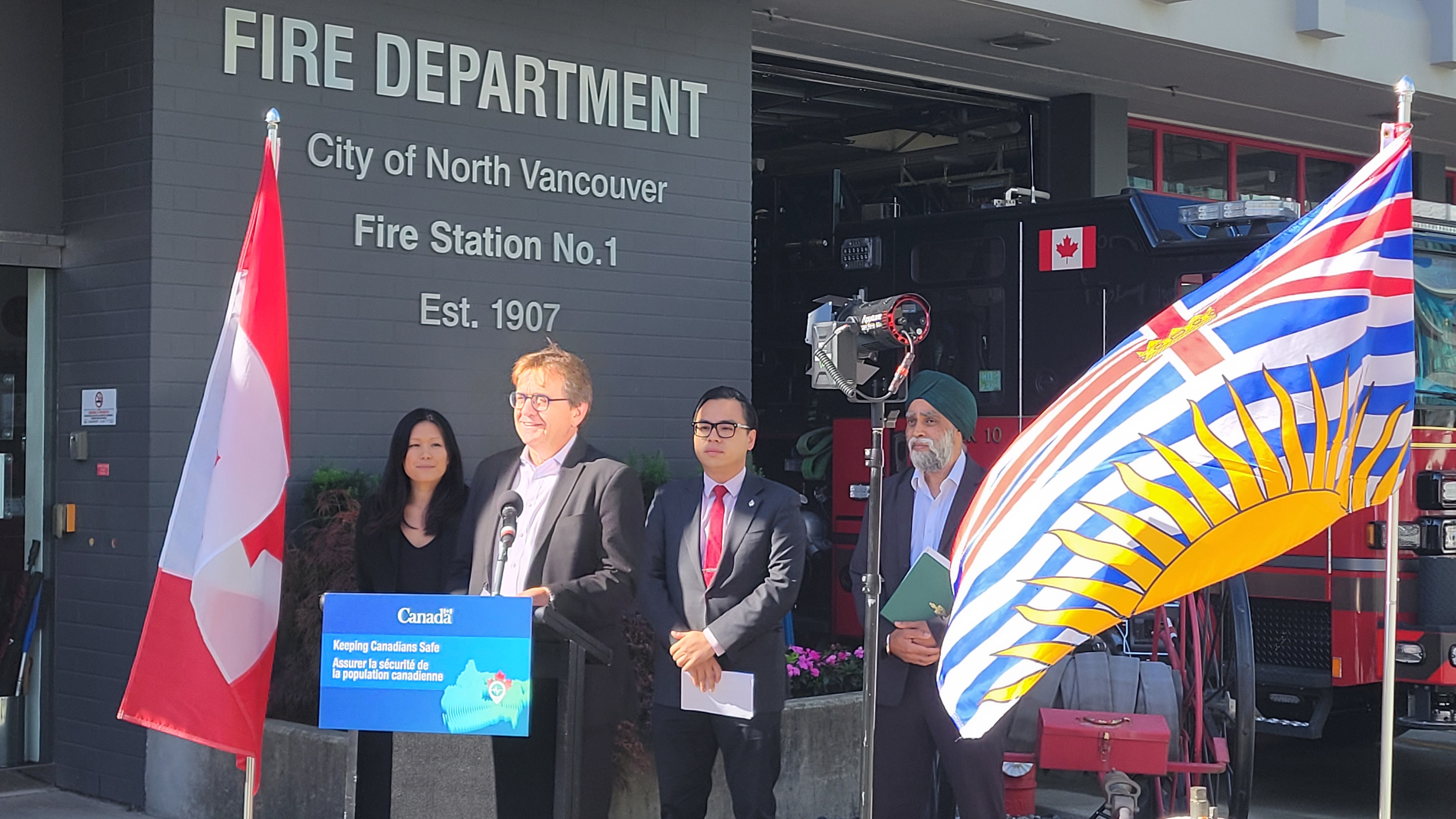
To mark the occasion, Jonathan Wilkinson, Minister of Energy and Natural Resources, held a media event at North Vancouver Fire Hall No.1. The Minister noted how this initiative complements other efforts the federal government makes towards disaster risk reduction, such as research which informs the seismic provisions within the National Building Code, and that when people receive an EEW, they should assume strong shaking is imminent and protect themselves through the Drop, Cover, Hold on response. Also in attendance were Emergency Preparedness Minister Harjit Sajjan, who spoke of the importance of such a system to help reduce the impacts from powerful earthquakes which are inevitable in the province, and BC’s Minister of Emergency Management and Climate Readiness, Bowinn Ma, who spoke about how even a few seconds’s warning can trigger automated systems to reduce damage and injuries.
2024-06-13: Pacific Geoscience Center Open House a success
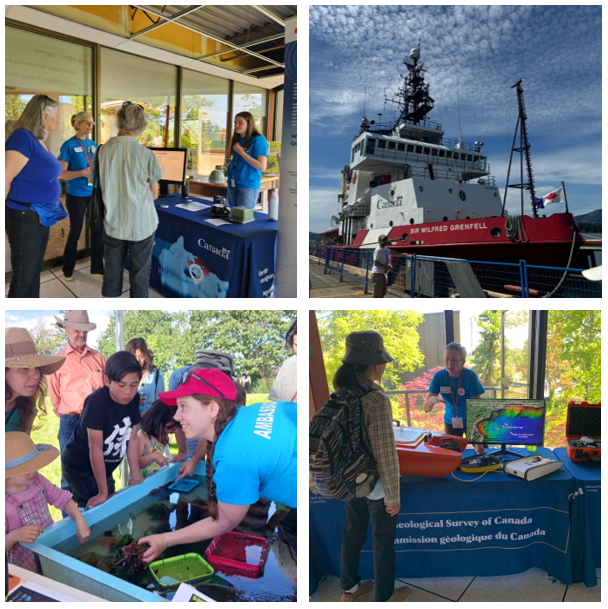
Earthquake Early Warning was profiled in an exhibit and a presentation by Alison Bird, at an open house last week. People took in scientific exhibits and demonstrations, presentations, children's activities, and tours of the Canadian Coast Guard vessel, Sir Wilfred Grenfell. Other topics included geophysical monitoring and research activities, ocean chemistry and biology, tidal currents, and marine charts.
Natural Resources Canada and the Department of Fisheries and Oceans held the Open House at their Institute of Ocean Sciences / Pacific Geoscience Centre on Vancouver Island, British Columbia. Starting with two days of visits by middle and high school students, the institute opened its doors to the public on Saturday. Over 1,800 people visited the campus that day.
2024-03-12: EMCR begins EEW advertising campaign in BC
British Columbia’s Ministry of Emergency Management and Climate Readiness (EMCR) has started an Earthquake Early Warning (EEW) advertising campaign, to alert people of the impending launch of the national EEW system in the province.
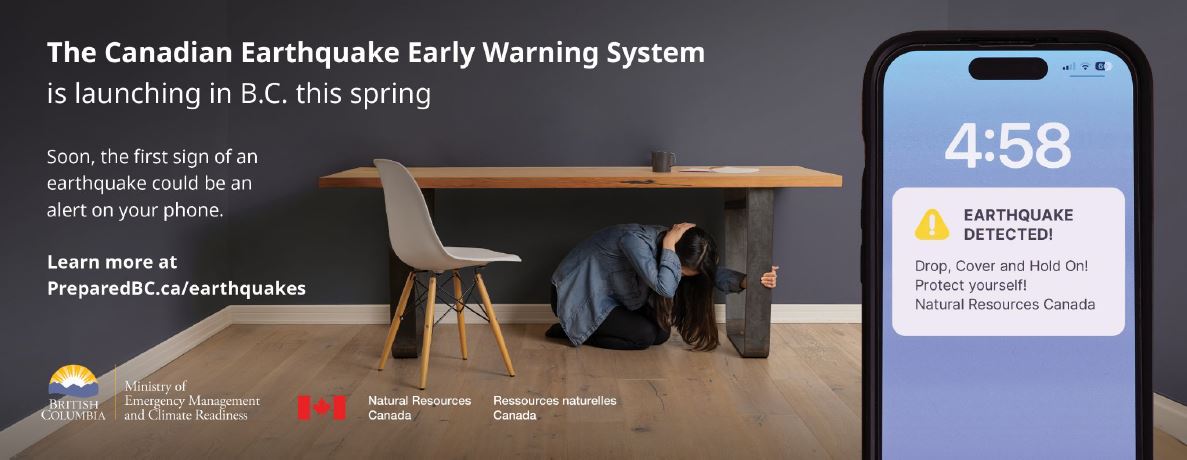
EMCR is also incorporating information on EEW into their public education materials and outreach activities, included within the popular Earthquake and Tsunami Guide. This work, funded by Natural Resources Canada, will improve awareness around earthquakes and EEW in BC, encouraging people to take protective actions when they receive an alert.
2024-02-29: EEW profiled at Geo-Congress conference
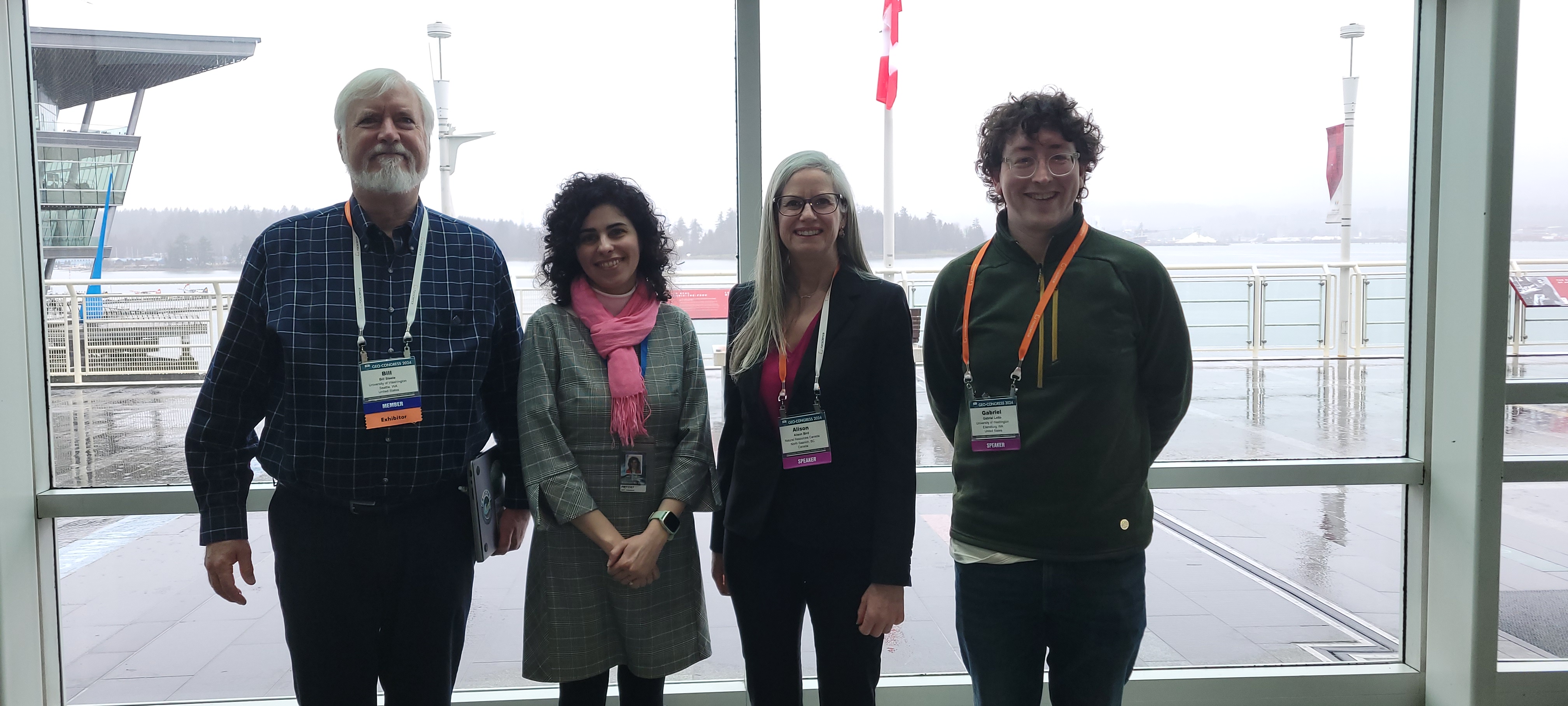
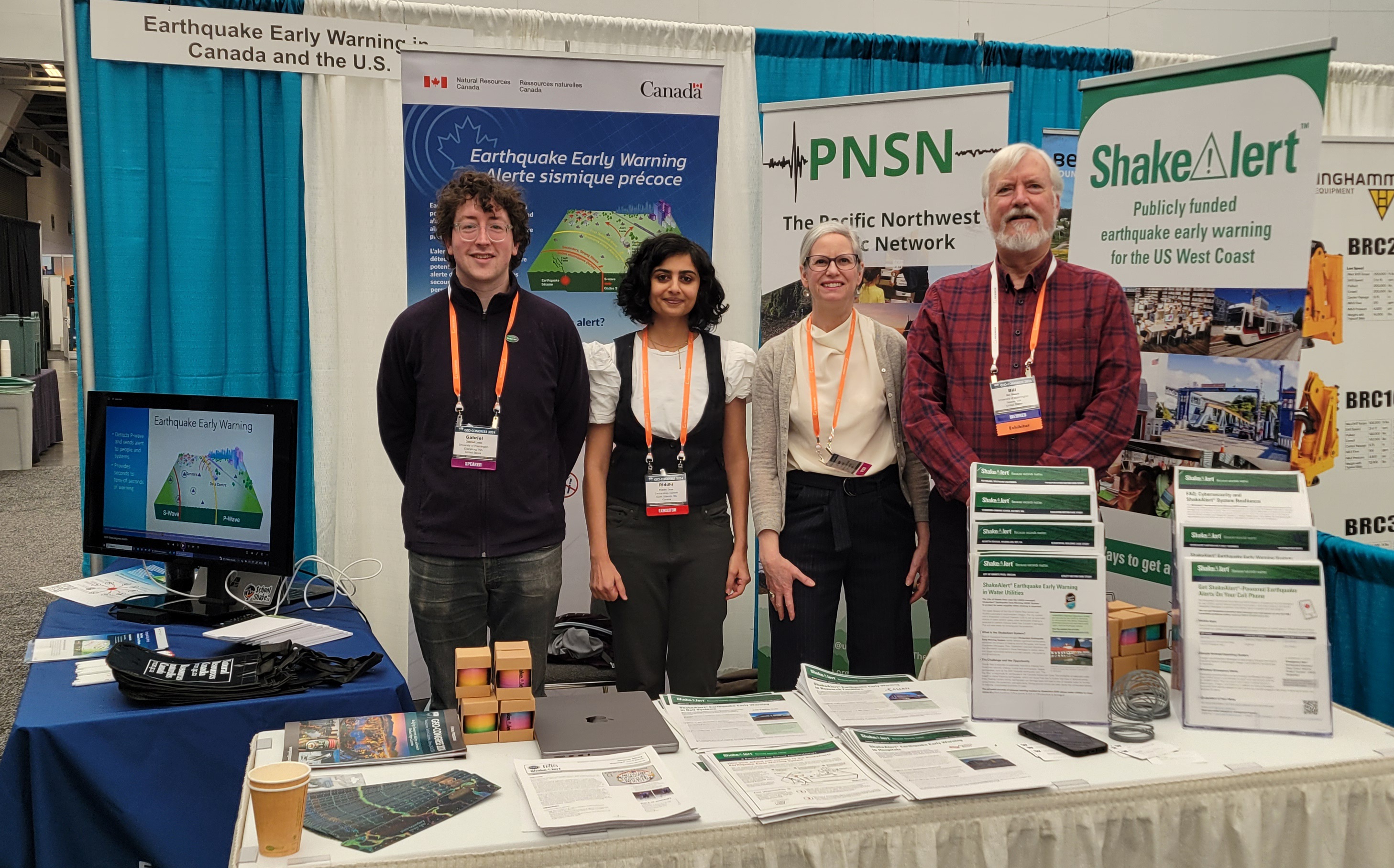
At the Geo-Congress conference in Vancouver, BC this week, NRCan seismologist, Alison Bird, joined counterparts, Bill Steele and Gabriel Lotto from the Pacific Northwest Seismic Network. They participated on a panel to discuss Earthquake Early Warning (EEW) in Canada and the United States, and were joined by Shabnam Mir-Seraji from the Canada Line rapid transit system. Canada Line has EEW technologies in place to stop trains and to open gates at their stations when a strong earthquake occurs — and their participation was especially pertinent as most conference attendees had arrived on Canada Line trains.
The panel covered several pertinent topics, including: the significant earthquakes which have happened and will happen in North America, the various actions people and systems can take to protect themselves in an earthquake, the success of the EEW system in California, Oregon, and Washington, and the imminent roll-out of the national EEW system in Canada.
NRCan Research Scientist Riddhi Dave, Alison, Bill, and Gabriel also co-hosted an “EEW in Canada and the U.S.” booth in the conference’s exhibition. They spoke with representatives from academia and industry. This conference proved an excellent opportunity to engage with critical infrastructure operators and other potential technical partners of the Canadian EEW system ahead of its roll-out this year.
2024-02-22: Half way installed in the east
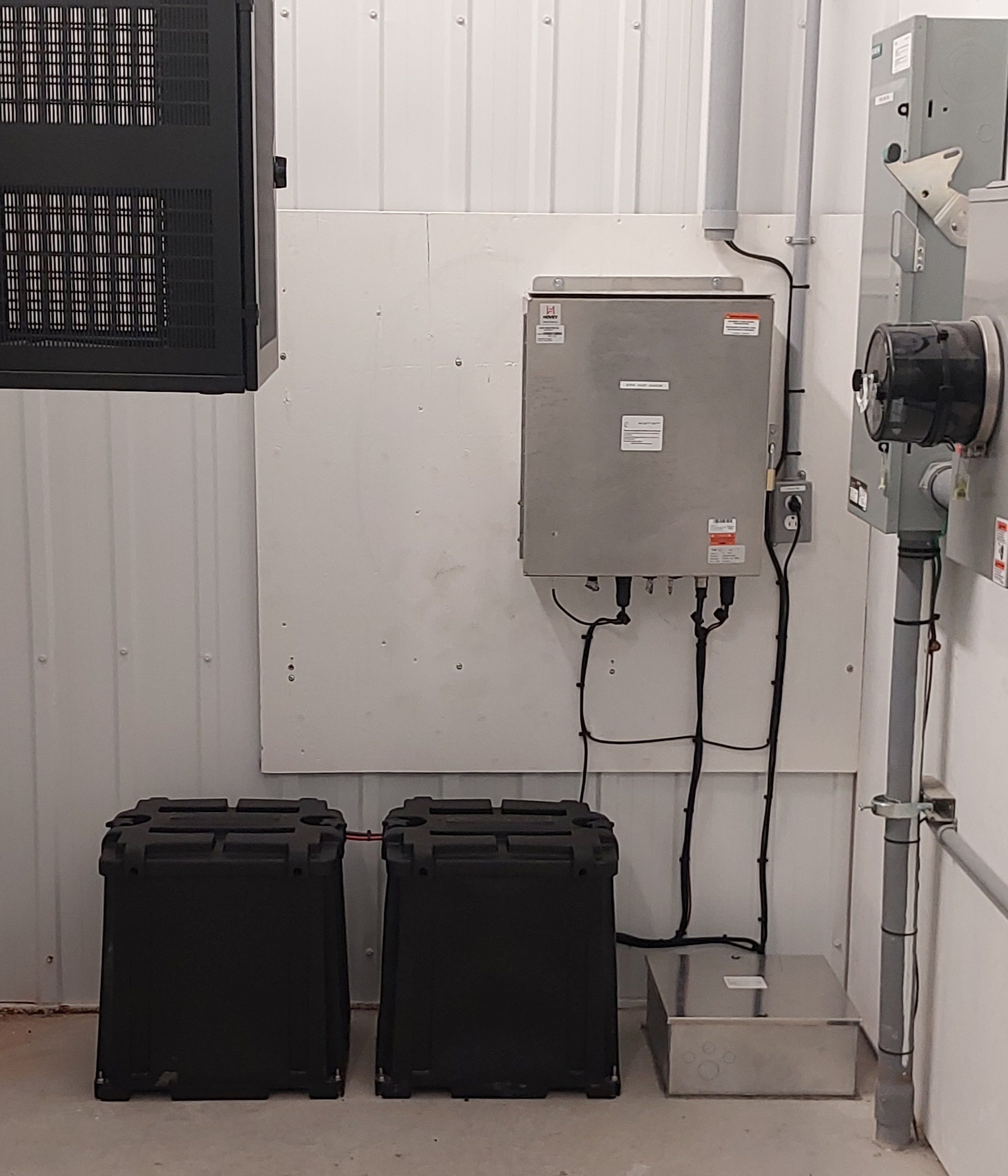
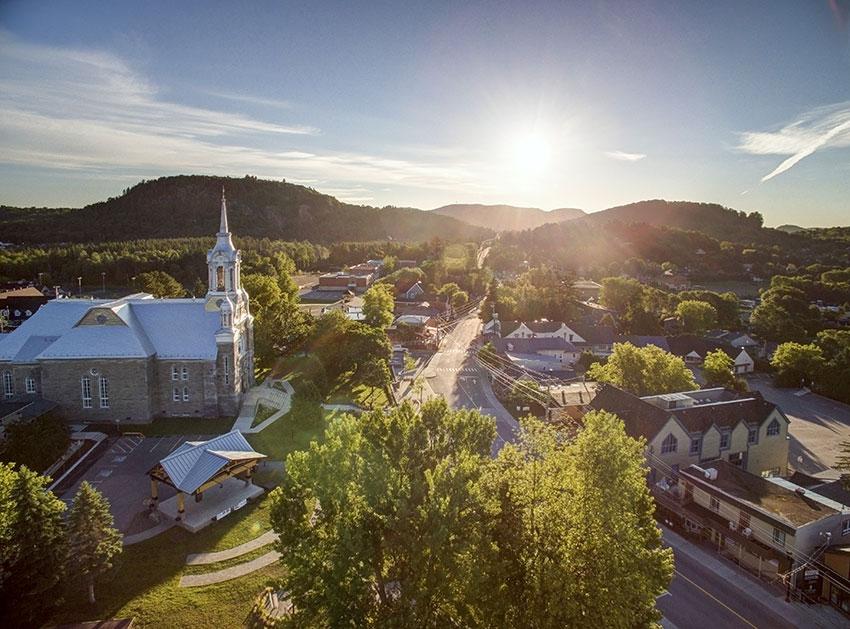
Today an Earthquake Early Warning station was established in Saint-Sauveur, Quebec. This station marks the half-way point for the installation of 224 core EEW stations in eastern Canada. This is great progress. The stations in eastern Canada are distributed over a broad region, often in locations which are challenging to access, particularly during adverse weather. When the EEW system is launched in eastern Ontario and southern Quebec this autumn, the stations will work together to monitor and alert for potentially harmful earthquakes, providing seconds to tens-of-seconds of warning before the arrival of strong shaking.
The area along the Ottawa River and Saint Lawrence Seaway has a history of damaging earthquakes and other large earthquakes will occur in the future. For instance, an Insurance Bureau of Canada study (2013) estimates that the damages from a credible magnitude 7.1 earthquake in the Quebec City region would result in losses over $60 billion. Through use of EEW technologies, these losses, plus injuries and fatalities, can be reduced considerably.
2024-01-08: Japan’s EEW system helped reduce impacts of New Year’s earthquake
On the first day of 2024, a magnitude 7.6 earthquake struck the Noto Peninsula on the west coast of the Japanese Island of Honshu. The earthquake caused violent shaking and some severe damage close to its epicentre, resulting in some fires, and it generated a tsunami. The Japanese Meteorological Agency’s (JMA) Earthquake Early Warning (EEW) system alerted critical infrastructure operations in the region, prompting Shinkansen trains to halt in central and western parts of Japan, avoiding derailment. EEW messages sent to cellular phones, televisions, and radios provided valuable seconds for people to take actions to protect themselves.
The Japanese EEW system, “Kinkyu Jishin Sokuho”, has been operating since 2007, initially alerting rail systems and hospitals, then also schools, and eventually a broad array of critical infrastructure facilities and the public.
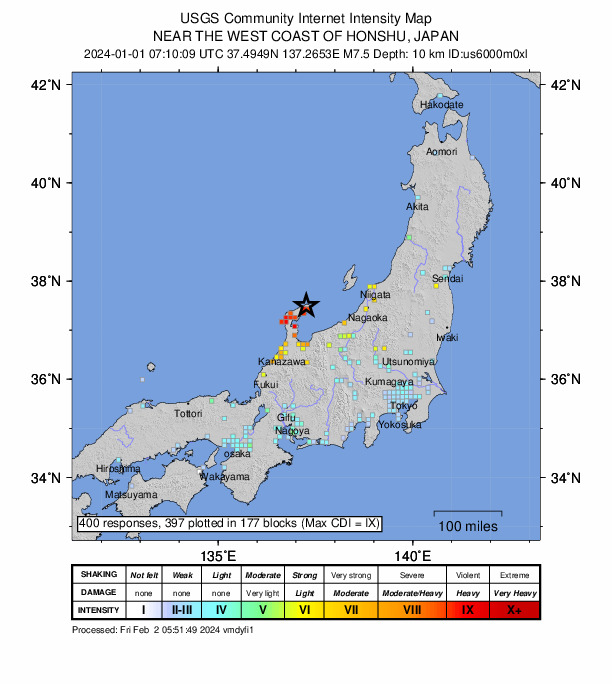
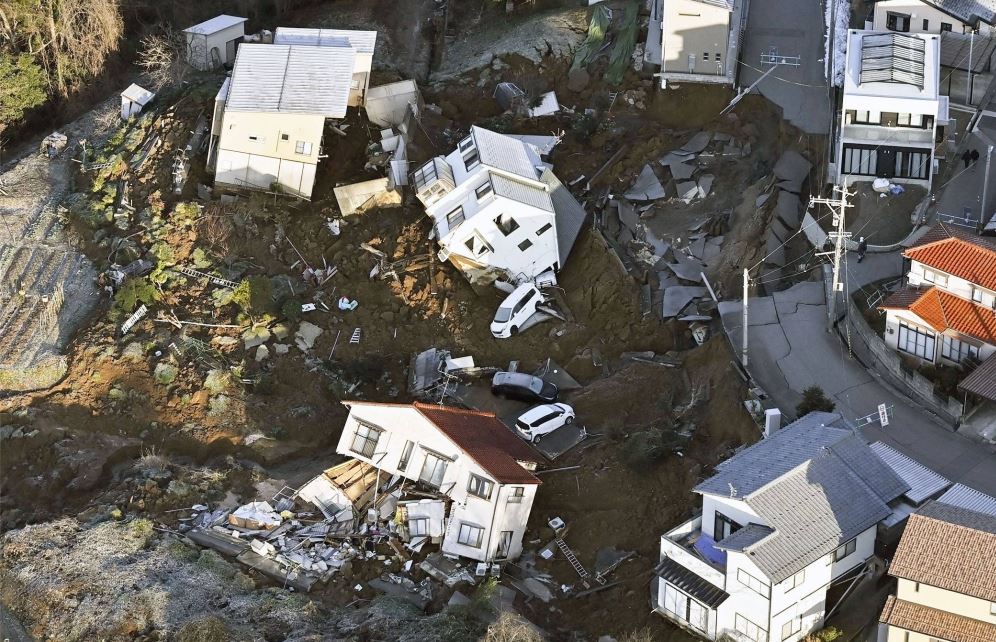
The vast majority of earthquakes in the region occur on the east coast, where the Pacific Plate subducts beneath Japan. The New Year’s earthquake occurred instead on a shallow fault, directly beneath the Noto Peninsula. Shallow earthquakes cause more damage than deeper ones because the energy is released closer to the Earth’s surface (closer to people and structures) and therefore produces stronger shaking relative to deep earthquakes, which are further from the surface.